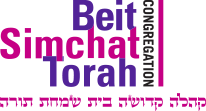
Out of One, Many
.וַֽיְהִי־עֶ֥רֶב וַֽיְהִי־בֹ֖קֶר י֥וֹם שְׁלִישִֽׁי
And there was evening and there was morning, a third day.
Genesis 1:13
“All beginnings are difficult – כל התחלות קשות,”[1] in part because the initial beginning was hard. The very first creation was a radical disruption from the singular reality of God’s oneness, to the existence of something else. In highlighting this act of separation, the mystical tradition parses the verse to stress the severity of Creation. Since the letter בּ means two[2] (or “plural”) and Elokim[3] is God’s attribute of judgment, it understands “בְּרֵאשִׁ֖ית בָּרָ֣א אֱלֹקים – In the beginning, God created…”[4] – as “the creation of plurality is the beginning of harshness. It isn’t until the end of the third day, after twelve consecutive verses each containing the word “Elokim”, that there is an omission of this dynamic in the 13th verse, which marks a movement away from judgment and towards the 13 attributes of mercy.[5]
In Judaism, the night comes before the day.[6] This principle is not only instructive in measuring time, but it teaches us that the dark moments in our lives prepare us for a better tomorrow. King David taught[7] “Those who sow in tears shall reap with songs of joy – הַזֹּרְעִ֥ים בְּדִמְעָ֗ה בְּרִנָּ֥ה יִקְצֹֽרוּ.” This cycle is the natural order of creation and is reflected by the numerical value of בְּרֵאשִׁ֖ית בָּרָ֣א – In the beginning [God] created equaling Those who sow in tears shall reap with songs of joy – הַזֹּרְעִ֥ים בְּדִמְעָ֗ה בְּרִנָּ֥ה יִקְצֹֽרוּ.[8] Knowing that the inevitable hardships along the way are really an investment for the future can help motivate us to persevere while we continue to focus on the goal of restoring the world to a unified way of being.
After creation, the process of regaining oneness took 26 generations. According to the midrash,[9] the first letter of the Hebrew alphabet, the aleph – א, petitioned God that the world should be created with an aleph, instead of with the second letter in the alphabet, bet (בְּרֵאשִׁ֖ית). God comforts the aleph, that even though creation begins with bet,[10] in the future God will give the Torah at Mount Sinai and it will begin with [an aleph] ‘אָֽנֹכִ֖י֙ יְ-הֹ-וָ֣-ה אֱלֹקיךָ – I am HaShem your God.[11]
“HaShem” – literally “The Name”, is how we refer to God’s ineffable name “יְ-הֹ-וָ֣-ה”, also known as the Shem Havaya – הוי”ה, or the Tetragrammaton (from the Latin meaning “4 Letters”). This name of God characterizes God’s attribute of mercy and has a numerical value of 26. The letter “aleph – אלף– א” also represents God, as the “אלופו של עולם – Alepho Shel Olam – Master of the Universe,” and is formed by placing two yuds “י” above and below a slanted vav “ו”, also equalling 26.[12]
The creation of Adam in the 26th verse of the Bible further identifies the number 26 with re-unification and introduces the idea of human agency in reclaiming universal “oneness.” Adam, the first person, was created “in God’s image” with the explicit charge to bring all of creation together.[13] Human partnership[14] is necessary for God’s attributes of mercy to be expressed.
There is strength in numbers and so we must be thoughtful in organizing our alliances. Warning us about the dangers of misappropriating the resources of the world, the midrash teaches that on the third day of creation, the concept of warriors[15] was created.[16] Once land and sea were separated and vegetation sprung forth, there was an awareness among the trees that the earth also contained ore to forge weapons, and axes that could potentially be used to chop down the trees. Frightened, the trees receive a cautionary guarantee from the iron: “you have nothing to be afraid of as long as you don’t become attached to us – to be used as the handle for the ax.”[17]
The temptation to align with a perceived power can be very attractive, but like the tree, such an arrangement ultimately ends in one’s own destruction. “גָּבְרָה – gavrah” the word for “person” is also the same as the word for “warriors – גִּבּוֹרִים – geborim.” As people, we hope to be brave, courageous, and willing to fight for what is right. However, attaching ourselves to the wrong side makes us partially responsible for the unintended consequences.
In Hebrew, the word for “ally” is “chaver – חבר”, derived from the Latin “alligare”, and it means to bind or attach, (like “alloy”). Being an ally takes strength and discernment. The numerical value of “chaver” and “gavrah” are both 210, perhaps teaching us that being good doesn’t come by itself and it isn’t always so easy. Nachmanides, in a famous letter,[18] writes: כל המקודש מחבירו – חרב” “יותר מחבירו – whoever has a greater capacity for holiness, has increased potential for desolation.”[19] This is one of the lessons of the third day of creation: when our power is misused, it contributes to our own downfall.
Completeness, according to the Maharal of Prague,[20] is best expressed in the number three because it allows for two separate things, or people, to come together for a shared purpose and bring about greater benefit for the whole. He explains that the letter “ב – bet” is formed with three lines. Two of them are parallel to each other and even when extended forever won’t touch, like two people who will never become the other person. The third line is what connects those two, and in doing so forms a sustainable model of cooperative living.
The Torah begins with the letter “ב – bet,” which when spelled out is the word for “house – bayit – בית” to teach us that only through working together can we achieve the stability of a healthy home. By allying together, we reflect God’s Divine oneness and achieve the ultimate purpose of Creation.
[1] Mekhilta d’Rabbi Yishmael 19:5.
[2] The letter “ב” is the second letter in the Hebrew alphabet.
[3] See Rashi on Genesis 1:1.
[4] Genesis 1:1.
[5] Exodus 34:6-7 HaShem, HaShem, God, compassionate and gracious, slow to anger, and abundant in kindness and truth. Preserver of kindness for thousands of generations, forgiver of iniquity, willful sin, and error, and who cleanses.
[6] Genesis 1:5.
[7] Psalms 126:5.
[8] See Olas Shabbos page 24.
[9] Bereishit Rabbah 1:10.
[10] This might also be the intention that we are meant to bring to our study of Torah today with each tractate of talmud only beginning on daf bet, page 2.
[11] Exodus 20:2.
[12] See Tikuni Zohar introduction 16b.
[13] See Rashi for a more complete explanation.
[14] Lechem Simlah page 5. This is further alluded to in the word “בְּרֵאשִׁ֖ית – In the beginning” having a mispar katan of 13, half of the contribution to achieving the indivisibility of “HaShem is One.” Mispar Katan is the value of the letters, but without the zeros after large numbers. (ex. “Yud” is 1 instead of 10, “Tav” is 4 instead of 400).
[15] The word in Ezekial 23:23 for “warrior” is “Shleshim” which could be read to mean on the third “shalos”.
[16] Midrash Rabbah 1:13.
[17] See Eitz Yoseph and Moranu HaRav Zev Volf.
[18] אגרת ז, כתבי הרמב”ן, כרך א, עמוד שסח
[19] In Hebrew, “ally” and “sword” are the same three letters, albeit in a different order.
[20] See Gevurot HaShem 31.
